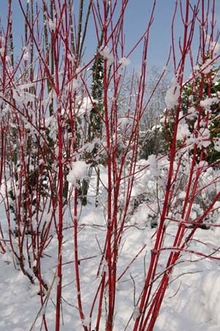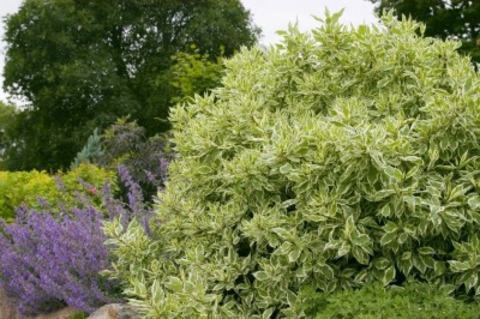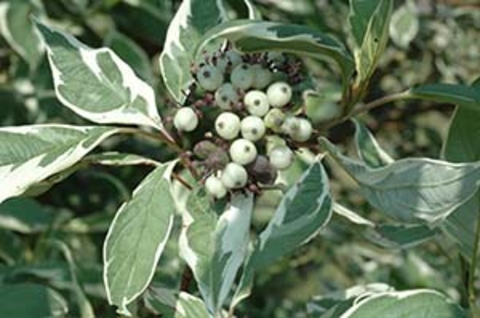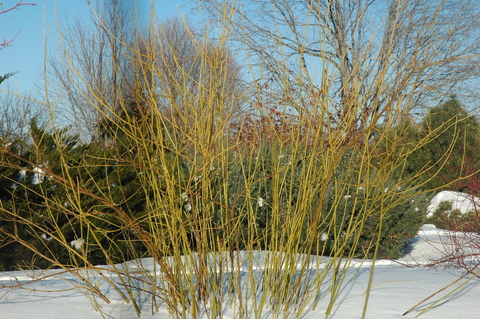Cornus alba is the Asian relative of Minnesota’s native redosier dogwood (Cornus sericea). Both shrubs are known for their colorful winter bark. Flowers, fruit, cultural requirements and landscape uses are very similar.
Tartarian dogwood is used as a border, mass, screen or specimen plant in landscapes.
The fruit is a popular food for songbirds.
Tartarian dogwood is adaptable to most planting sites. Do not plant in full shade.
In late summer, younger stems will start to turn from green to red or yellow-green.
Color intensifies throughout winter until spring when stem color returns to green.
Description
- Deciduous shrub; it drops its leaves in fall
- Height: 3 to 10 feet
- Width: 3 to 10 feet
- Fast growth rate
- Rounded, arching plant form
- 2 to 5 inch leaves
- 2-inch clusters of small, 4-petaled, yellowish-white flowers in mid-May to June
- Small, round, white to pale blue fruit mature in late summer and autumn
Growing Tartarian dogwood
- Hardiness zone: 3 to 7
- Plant in full sun to part shade
- Best soil properties for Tartarian dogwood:
-
Sandy to clay soils
-
Soil pH 5.5 to 7.0, Have your soil tested by the U of M Soil Testing Lab
-
Prefers moist soils and well-drained soils, adaptable to drier and wetter soils
-
Common problems
For most Tartarian dogwoods, brightly colored bark occurs on stems that are less than 3 years old so pruning should be a regular practice. Remove the oldest third of stems down to the base of the plant every year or two.
This is a suckering species and over time, suckers may need to be removed to maintain plant width.
Leaf spot is a common disease.
Visit What's wrong with my shrub? – Dogwood for a list of the most common dogwood pests in Minnesota.
Cultivated varieties of Tartarian dogwood for Minnesota
Cultivated varieties have been selected for stem color, fall color, plant form and size, and pest and stress tolerances.
- 'Argenteo-marginata' - red winter stems, variegated foliage, compact habit
- 'Bud's Yellow' - yellow winter stems, fall color
- First Edition®Baton Rouge™ - red winter stems
- Ivory Halo® - red winter stems, variegated foliage, compact habit
- Red Gnome™ - red winter stems, compact habit
Reviewed in 2018





